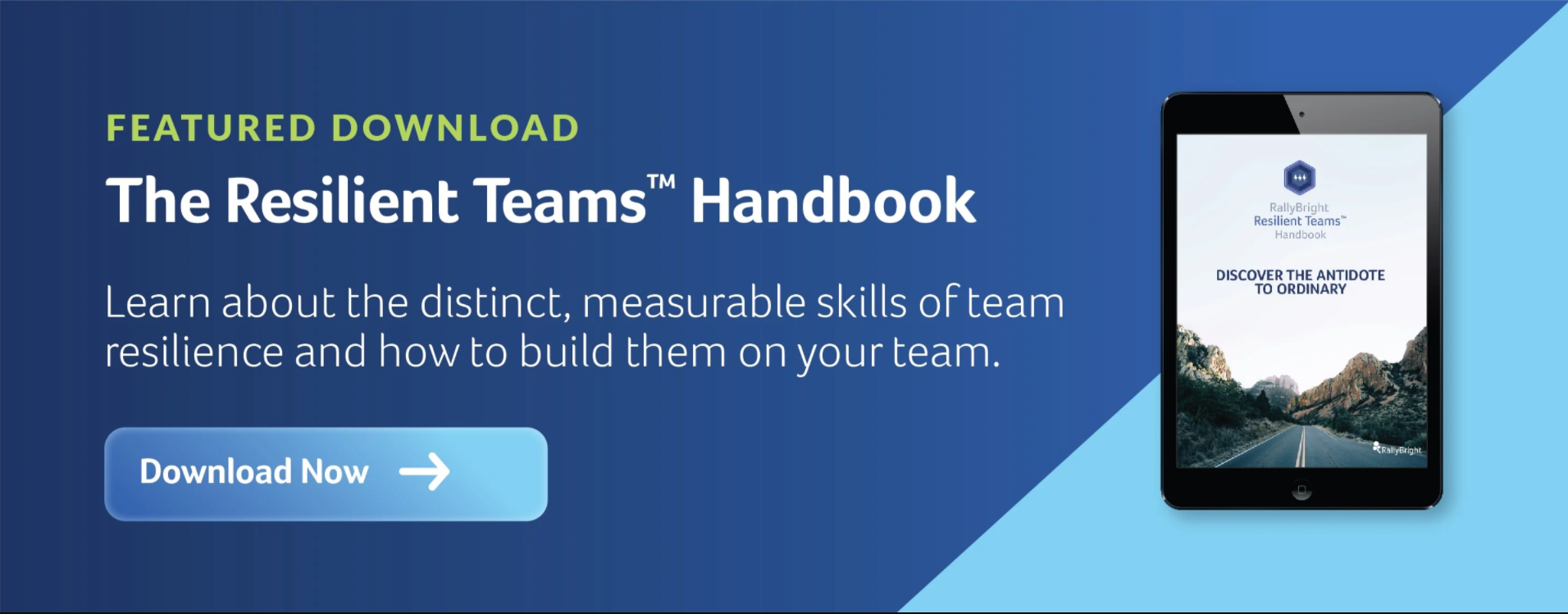Teamwork is a huge part of modern working life for almost everyone. But teams have proven to be great at failing. This problem is why I think the secret to better performance for most organizations is to focus on building more resilient teams.
I’ll say more about what I mean by resilient teams, but first, consider this research. A few years ago, leadership scholar and Stanford professor Behnam Tabrizi took a look at a large group of cross-functional teams within leading corporations and found that the heavy majority—75 percent—were what he termed “dysfunctional.” Specifically, Tabrizi found, these teams failed on mission-critical criteria that included meeting a planned budget, staying on schedule, adhering to specs, fulfilling customer expectations and staying aligned with their companies’ corporate goals.

I witness such struggles frequently in my work with managers, founders and other business leaders. Many recognize that their teams aren’t doing as well as they could be. Often the signs are soft sales numbers or low recurring revenue or other weak business metrics; other times they’re more that working on the team feels frustrating, conflict-riddled or inefficient. Whatever the warning signs, what most managers and leaders share is that they can’t see why their teams aren’t doing better. Why is it so hard for teams to perform well, and to do so sustainably? And more critically, what can leaders do to help their teams do better?
I believe that the key to success for teams comes down to building their resilience. Teams are the de facto unit of performance in most organizations large and small, and the most capable teams are resilient teams.
Resilient Teams Share Common Characteristics
What does it mean to be resilient? Resilience, as we define it at RallyBright, is the ability to engage with opportunity, persist through challenges, recover quickly from setbacks and learn from these experiences to move forward wiser and better. We measure resilience based on five underlying attributes we’ve found add up to it: direction, connection, alignment, performance and attitude. Teams that master these capabilities—resilient teams—are the only teams that are able to produce great business results over a sustained period of time. Let’s take a closer look at what puts teams on that road to resilience.
Resilient Teams Nail Engagement and Impact
Most problems that teams experience boil down to two core issues: engagement and impact.
Engagement is all about team dynamics. Teams that are highly engaged have created a dynamic where team members are bound to one another by a constant drive to exceed their potential, and where team members feel safe enough to take risks and fail. When we assess these teams based on their resilience attributes, they score high on both connection and attitude.
You can probably easily recall the times you’ve worked on an engaged team, because it feels great. Members of these teams show a depth of commitment not just to one another, but also to the good of the whole—whether that’s the team itself or the organization they work for. They are pragmatic optimists who have a growth mindset that positions them to embrace challenge and experience failure as a springboard for the greater development of their abilities. They are trusting, open to conflict, and driven to excel.
Now let’s turn to that second key, impact. High-impact teams substantially influence key business drivers. When we assess these teams on their resilience attributes, they score high on direction, alignment and performance—the essential ingredients of impact. These teams share a clear purpose, understand their customers and other stakeholders, and agree on the overall strategy of their business. They are decisive and have a significant bias for action. These teams get things done.
As teams develop direction, alignment and performance their results have higher business impact. As they strengthen their connection and attitude they grow more engaged. Resilient teams are able to achieve their impact by working together in a highly engaged fashion. That’s the formula for long-term, sustainable success.
Identify Your Team’s Area of Greatest Need
Now that you know what adds up to better team outcomes, you can start connecting the dots as they relate to your own team.
Take a moment to really notice and think about your team’s behavior. Do members seem checked out, distracted or unmotivated? Is there a general reluctance to volunteer to take on tasks? We’ve all felt those long and uncomfortable silences when no one comes forward to help after an ask. Consider how your team handles conflict. Does it feel like it gets resolved productively, or do you sense your colleagues retreating into their shells to avoid it? Is there a total absence of conflict?
If any of the above sounds familiar, your team is disengaged. You want to focus your efforts on improving their capabilities around connection and attitude. (You can read about how to boost engagement here.)
When Direction Needs Attention
If your team does show signs that they’re engaged (a strong positive), but business results are suffering, it’s time to focus on direction and alignment. Across the 600-plus teams we’ve worked with, direction is the bedrock issue we see plaguing teams the most. Most teams simply haven’t gone through the exercise of defining together why they exist. Take some time to gather with your team to have an open discussion about your shared purpose. Focus on these two questions:
- What can we do together as a team we couldn’t achieve on our own? (In other words, what is our shared purpose?)
- How do we need people to behave in the team to achieve that purpose?
You can read more about driving higher impact here.
Like most of us individuals, teams are constantly evolving works in progress. Helping your team develop into the best version of itself —into a resilient team — takes time and effort. But time and again we witness that it’s some of the most important work you can do for the good of your business and your people.


